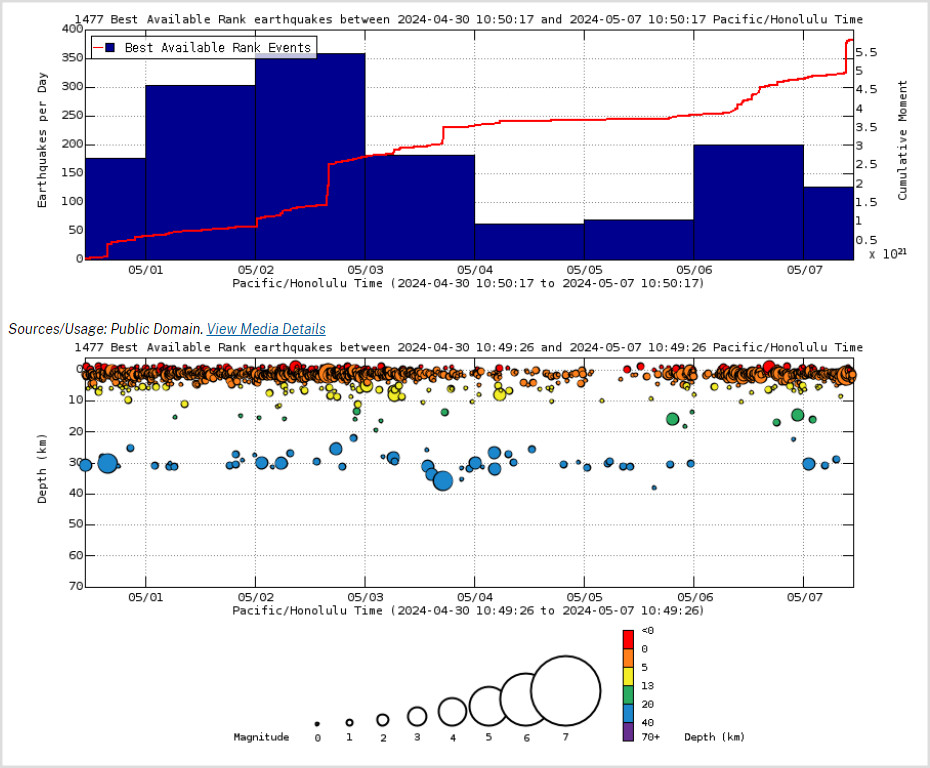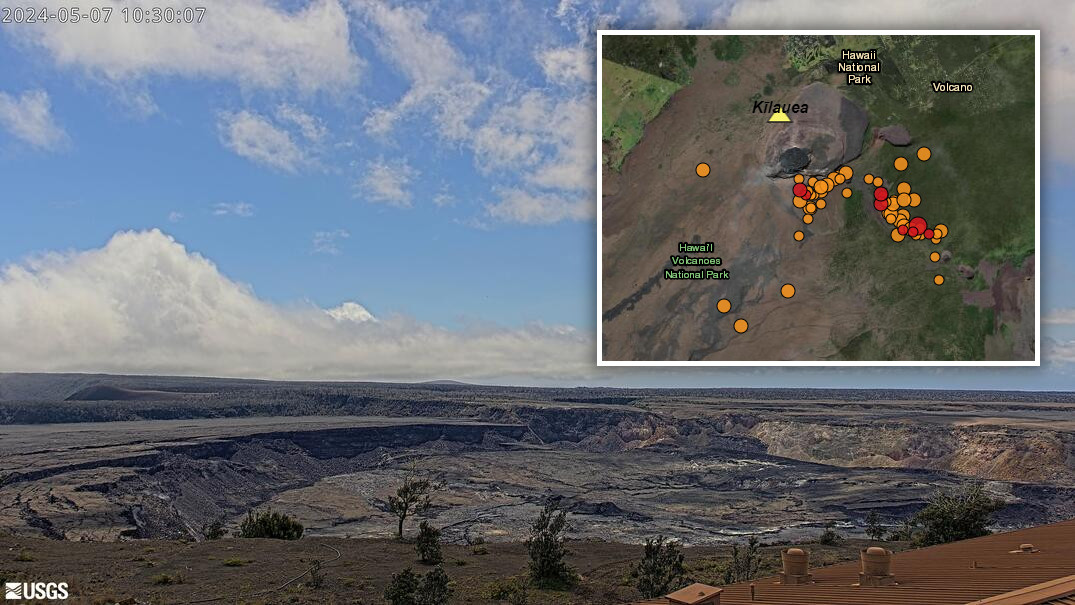Kilauea Volcano Update (A synthesized voice was utilized in the narration for this story)
(BIVN) – Kīlauea volcano is not erupting, however the heightened unrest has returned to the upper East Rift Zone and the summit caldera south of Halemaʻumaʻu.
Earthquake counts have increased over the past day, and steady inflation continues to be recorded beneath the caldera region.
The current USGS Volcano Alert Level remains at ADVISORY. As of 11 a.m. HST, Hawaiʻi Volcanoes National Park has not initiated any closures in the upper Rift Zone due to the uptick in activity. Last week, similar seismic activity prompted some closures along Chain of Craters Road and a suspension of overnight camping in select coastal sites.
From the USGS Hawaiian Volcano Observatory on Tuesday, May 7th:
Summit and upper East Rift Zone Observations: Earthquake counts have increased again with approximately 230 earthquakes the past 24 hours. Of these, approximately 140 earthquakes were located in the upper East Rift Zone in a zone extending from Keanakākoʻi crater to the intersection with Hilina Pali Road. The remaining approximately 90 earthquakes were located in the caldera south of Halemaʻumaʻu. Earthquake depths have averaged 2-4 km (1.2-3.1 miles) beneath the surface, and magnitudes have been mostly below M2.0, with a few M2.5 events in the past 24 hours.

From USGS: Earthquake Rates and Depths as of Tuesday morning. Above Top: Number of earthquakes per day during the past week (blue bars). The red line is the cumulative moment (energy) release. Bottom: Depth of earthquakes during the past week in the area shown on the map above. Depth is reported relative to sea level, which is equal to a depth of zero on the above plot. On both figures, circle-size represents magnitude, and color indicates depth.
Ground deformation continues beneath Halemaʻumaʻu and the south side of Kalaupele and Keanakākoʻi crater. The Uēkahuna tiltmeter continues to record steady inflation beneath Halemaʻumaʻu that began early Saturday morning. The tiltmeter at Sandhill continues to record accelerated uplift in the south caldera region at rates similar to those prior to and during last week’s seismic unrest.
Sulfur dioxide (SO2) gas emission rates remain low. An SO2 emission rate of approximately 62 tonnes per day was recorded on May 2.
Rift Zone Observations: All seismic activity on the East Rift Zone is confined to the upper East Rift Zone, with no significant earthquakes occurring past the Pauahi Crater. At this time, seismicity in Kīlauea’s Southwest Rift Zone remains relatively low outside of the summit region. Measurements from continuous gas monitoring stations downwind of Puʻuʻōʻō in the middle East Rift Zone—the site of 1983–2018 eruptive activity—continue to be below detection limits for SO2, indicating that SO2 emissions from Puʻuʻōʻō are negligible.
Analysis: Magma continues to pressurize the system beneath beneath Halemaʻumaʻu and the south side of Kalaupele and Keanakākoʻi crater, activating seismicity along faults in the upper East Rift Zone. At this time, it is not possible to say whether this increase in activity will lead to an intrusion or eruption in the near future or simply continue as seismic unrest at depth. Changes in the character and location of unrest can occur quickly, as can the potential for eruption.


by Big Island Video News11:13 am
on at
STORY SUMMARY
HAWAIʻI VOLCANOES NATIONAL PARK - Earthquake counts have increased again within the upper East Rift Zone and in the caldera south of Halemaʻumaʻu.